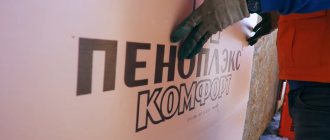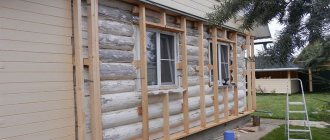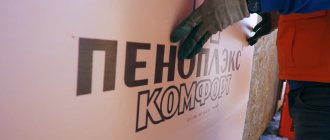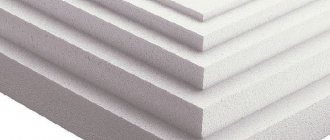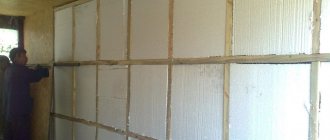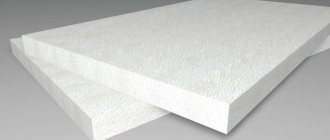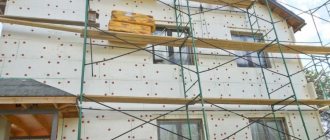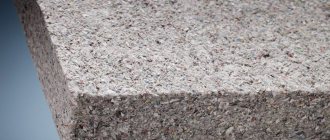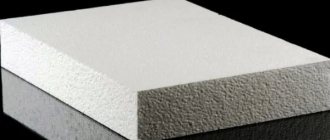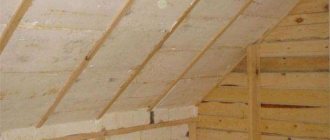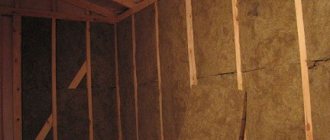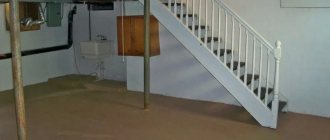Are you freezing again at your dacha and making a vow to finally insulate it before the next cold weather? The most economical and most common solution would be to insulate a wooden house with polystyrene foam. Our parents did this too, which means there is some point in it. On the other hand, there are many opinions against it. Is foam insulation worth it these days? Look for the answer in this article. We will consider the option of insulating it from the outside, since this work is easier to carry out if the house has already been built: there is no need to reduce the internal space, sheath it, or change anything from the inside.
Why do most people prefer foam plastic? This is a material of low thermal conductivity, weighs little, does not create additional load on the walls, is durable and dense. The second name for polystyrene foam. The list of its advantages is complemented by moisture resistance and excellent interaction with other building materials. Polystyrene foam is easy to process and inexpensive.
Advantages of insulation
Insulation of a wooden house from the outside with polystyrene foam is carried out due to the presence of advantages. The material is characterized by:
- Low thermal conductivity. Insulation is produced using gas, which maintains the thermal regime in the building.
- Environmentally friendly. If polystyrene foam is not subjected to heat treatment during the manufacturing process, it does not contain toxic substances.
- Moisture resistance. Polystyrene foam is not capable of accumulating and retaining moisture, therefore, when insulating a wooden house, dampness and the appearance of mold on the walls are eliminated.
- Lightness. This feature simplifies the installation process. The slabs are easy to cut and saw, which speeds up the work process.
- Availability. Expanded polystyrene has a low cost, which guarantees its availability to a wide range of buyers.
Expanded polystyrene has voids, which provides its soundproofing properties.
Insulating a wooden house from the outside with polystyrene foam: installation technology, reviews and videos
Insulation of a wooden house from the outside with polystyrene foam is carried out using the technology of applying the material to a prepared base made of timber or a metal profile. The ventilated facade system is widely used, but it is possible to place slabs in the internal wall structure.
Thermal insulation of timber structure with foam plastic
Regarding how to insulate a wooden house with polystyrene foam from the outside, a professional installation video will help you understand the question:
Since polystyrene foam has a lower vapor permeability than a log house, it is not recommended to use it as insulation. If you decide to use this particular type of insulation, you can use ordinary foam plastic of the M15-25 brand. However, it is very susceptible to mechanical damage.
Features of thermal insulation
- The use of slabs must have a thickness of 30 mm;
- To more firmly fix the sheets, before applying the adhesive composition, use a needle roller to create a perforated coating.
- The adhesive composition is placed throughout the sheet, which eliminates the formation of air chambers - places where condensation accumulates.
- It is not recommended to use anchors that exclude the hermetic properties of the material. Reinforcement is carried out using T-shaped profiles between the slabs.
- To ensure an increased level of safety, a fireproof coating is used.
Thermal insulation of a building made of solid foam
Stages of applying thermal insulation
Insulation of wooden buildings is provided using sandwich technology using vapor barrier. The whole process consists of several stages:
- Preparation of the façade surface.
- Placement of profile structure.
- Placement of the adhesive base on the insulation.
- Fixing the insulation to the surface.
- Fixing dowels.
- Installation of corner reinforcement.
- Fastening the reinforcing mesh.
- Creation of a protective and decorative layer.
Coating preparation
To create the façade base, the surface is cleaned of dirt and damage. At this stage, the base is milled, plaster and primer are applied to the resulting cracks.
Attention!
To create the most even coating, use a level.
Placement of the profile frame
Installation of the starting bar is provided for in the project documentation. Its fixation is ensured in a horizontal position using dowels in increments of 30 cm. To avoid the formation of defects when the material expands, it is necessary to leave gaps of 2-5 mm.
Placement of adhesive composition
Based on the base option, there are two options for coating with glue:
- Using a notched trowel (on a flat surface).
- Using pendulums (on uneven surfaces).
If there are significant irregularities, special beacons can be used. The application of glue is ensured in small proportions at small intervals. When air pockets form, gaps form. Excess glue is removed from the surface, which prevents its penetration into the connecting holes. The adhesive coating makes up at least 40% of the material.
Application of foam plastic on a wooden facade
Fixation with glue
Application of the slabs is ensured in a horizontal position using staggered technology. Placement is carried out from bottom to top. The plates are pressed tightly. Installation of the first row is carried out on the profile. At the corners, the plates are interlocked using teeth. Whole slabs are used on doors and windows, eliminating the formation of joints at the corners. The gaps between polystyrene foam boards are treated in different ways: using construction foam, sealant, or using insulation for large gaps.
Fixation with dowels
The foam is fastened with dowels. This is facilitated by the formation of holes along the edges and in the center of the panels. They require driving dowels with screwing in a spacer core. The dowel head should not go deep into the panels. The number of fastenings is determined by wind loads and the number of storeys in the room.
Corner amplifiers
External corners in window and door openings, as well as at the corners of the room, are reinforced with special strips.
Installation of foam plastic insulation
Reinforcement
Painting corners are fixed. The wall is first divided into sections approximately 1 m wide. The foam is covered with glue or putty. Using a notched trowel, furrows are created to embed the fiberglass mesh made of aluminum composition. The canvas in the form of a lattice is fixed with an overlap of 10 cm. Then a special product is applied and grouted with fine sandpaper.
Decorative finishing
As a finishing touch, putty and paint are used or siding is placed. A vapor barrier film is placed outside.
Before applying the slabs to the facade of the building, it is important to provide for the presence of breathable waterproofing (vapor-permeable membrane).
User reviews
If you need to insulate the outside of a wooden house with polystyrene foam, reviews from experienced craftsmen and novice specialists will help you choose the installation technology and brand of proven material.
For the first time, I insulated the facade with 50 mm polystyrene foam, the top covering was clapboard. He didn't last long. He just didn't last long. At that time, all kinds of waterproofing and extruded slabs had not yet come into fashion. This summer I did everything smartly: I used the Teremok program and calculated the thickness of the wall and its compatibility with the insulation. Only there the requirements for thermal protection of buildings are too strict, so the conditions had to be changed. In general, the cake was made from rockwool, membrane and siding.
I used polystyrene foam in my dacha as insulation for a wooden facade. Heat loss is minimal, there is no smell, it is cool in summer, generally normal. Recently I made an opening in the wall - the structure has not changed in 3 years. The internal lining is made as timber. Expanded polystyrene was placed between the posts without mounting foam. I made the markings with an allowance and cut them with a sharp knife. It stands up with effort, but without gaps. On the outside, just in case, I made a Tyvek gasket.
Disadvantages of polystyrene foam
Expanded polystyrene is a fire hazardous material. It is damaged by rodents that make moves, which speeds up the process of its disintegration.
Fragility or service life
The average service life of insulation is 10-15 years, subject to proper installation and processing.
Mold and mildew
When heated to more than 70 degrees, a loss of the structural properties of the material is observed. Polystyrene foam has low vapor permeability, which leads to dampness and rotting of the wood. Over time, mold and mildew spread on the tree.
Release of harmful impurities
The disadvantages of the heater include instability to combustion, during which toxins dangerous to humans are released. Therefore, when choosing expanded polystyrene, pre-fire retardant treatment is carried out and fire safety rules are observed during the operation of the building.
Pros and cons of expanded polystyrene
It is necessary to understand that styrene, which is a by-product from the oil industry, is used to make the material. Therefore, it cannot be said to be an absolutely environmentally friendly material. It is produced only industrially; artisanal and home production of polystyrene foam boards is impossible.
However, extruded polystyrene has a number of significant advantages:
- low cost compared to other insulation materials;
- high thermal insulation rates due to the dense structure;
- low weight and good compression resistance;
- has excellent soundproofing qualities;
- moisture resistance;
- a wide choice depending on its characteristics: density, thickness, surface structure, end edges (straight or groove), color palette;
- able to interact with various adhesives, lime, gypsum, cement, salt, bleach, water-based paint;
- does not rot (decomposition of the material in the ground can exceed 10 years);
- fire resistant (fire temperature is 2 times higher than wood);
- durability (manufacturers guarantee a period of operation from 15 to 60 years);
- no need to use special tools for cutting and installation.
The material is created artificially and has no natural origin. It contains many chemical additives and compounds that are unknown to the average consumer, so in addition to its advantages, polystyrene foam has disadvantages:
- reacts negatively to ultraviolet radiation, from which the structure is destroyed over time and the original characteristics are lost;
- reacts negatively to gasoline, fuel oil and various types of solvents;
- susceptible to destruction by termites and rodents;
- in case of combustion, a gas is released, which is many times more dangerous than carbon dioxide (it is fatal for humans).
Which polystyrene foam should I choose?
Experts say that it is better to insulate a wooden house from the outside with polystyrene foam, which has a low density. This does not affect thermal conductivity. This material is light in weight. Its compressive strength when deformed is up to 10 percent, which guarantees its resistance to fractures. It is recommended to use insulation that has a thermal conductivity of up to 0.042 W/mK.
German models Grohe
Groe's installation is popular and in demand. The system offered by the German manufacturer is presented in several models, so you can choose a Grohe installation complete with a toilet that complements the installed bidet. You can also consider a solution such as a wall-hung toilet with a bidet function, which allows you to solve the problem of functionality and save as much space as possible.
At first glance, the installation with a Grohe toilet seems like an intricate and difficult-to-install design, but in fact its installation does not pose any difficulties. In this case, combinations of a proprietary design and a toilet or bidet of another brand are allowed. The installation of a Grohe toilet is characterized by the following qualities:
- Versatility;
- High strength and long service life;
- Ensuring water conservation;
- The presence of a miniature inspection window on the tank;
- No noise during operation.
The only drawback that the Grohe toilet installation has is its high cost (depending on the model, the price exceeds 10 thousand rubles).
Wall decoration
It is recommended to carry out external heating in the summer. There should be no precipitation outside, which will eliminate dampness on the walls. The heating technology is simple, so you can do it yourself.
Before heating, the walls of the frame house are prepared. To do this, use a brush, an antiseptic solution and a primer. The walls are pre-cleaned of dust and dirt. To do this, use a hose with water and a brush. You need to let the walls dry for 2-3 days.
At the preparation stage, the walls are inspected for damage. If present, remove the top layer with a spatula or other tool. Paint and varnish coatings can be removed with a construction hairdryer. If it was applied a long time ago and has not cracked or peeled off, then it is not removed. When covering walls, make sure that the coating does not come into contact with polystyrene foam, as this will shorten the shelf life of the latter.
Experts advise completely sanding the surface of the wall with a special machine. The wood is coated with fire retardants, which will increase its resistance to fire. After this, the surface of the wall is treated with a composition with antiseptic qualities, which will eliminate the possibility of pests appearing inside the walls. If there are metal elements on the surface, bitumen mastic is applied to them to prevent corrosion. At the final stage, the surface is primed in two layers. The primer strengthens the top layer of antiseptic and ensures good adhesion of the wall to the glue.
Frame method
The frame allows you to provide additional support points for the heater, which guarantees the quality of its fastening. The sheathing is constructed from wooden blocks, the width of which corresponds to the thickness of the heater.
Before attaching the boards, they are treated with an antiseptic solution. The frame is mounted in a vertical position. The distance between the boards should correspond to the width of the foam board. It is calculated so that the sheet fits tightly between the boards.
When installing the sheathing, use a building level, which allows you to level the walls. To fix the boards, hardened wood screws are used. In case of unevenness on the walls, wooden blocks are placed under the boards, together with which they are fixed with self-tapping screws. The foam is laid from bottom to top. The plates are secured with plastic umbrellas or special glue.
Attaching insulation to glue
When using glue to attach foam, it is applied over the entire surface of the sheet. This will ensure a perfect and tight fit of the heater to the wall. In order for the sheets to be fixed on a plane, they are glued together. After gluing the sheet, a plastic dowel is inserted into it and hammered in. To avoid cold bridges, the joints between the sheets are filled with glue.
After the installation of polystyrene foam is completed, regardless of the fastening method used, a waterproofing membrane is installed. It is laid according to the manufacturer’s instructions, which will ensure the removal of moisture from under the membrane. The waterproofing layer is laid vertically. There should be an overlap between the strips, the width of which is 15 centimeters. Scotch tape or adhesive tape is used to secure individual layers. The membrane is attached to the sheathing boards with a construction stapler. At the last stage, facing work is carried out. Preference is given to sheet material that will protect the walls and heater from external negative influences.
How to deal with slopes
Thermal insulation of house slopes is also important for comprehensive insulation. In some situations, it’s even worth starting with the windows, and only then insulating the walls. When choosing insulation for windows, do not forget that there will still be a layer of finishing on it, and all this thickness should not interfere with the operation of the window. Where the slope insulation connects to the wall insulation, you just need to cut off the first one.
When everything is ready, the walls and slopes are insulated, you can choose whether to line the wall with clapboard, more modern siding, or simply plaster the house.
Both lining and siding require the installation of additional slats, which are nailed to the ends of the sheathing slats directly onto the membrane. The strips of siding or lining themselves are attached to these mounting rails.
To plaster the walls, an adhesive composition should be applied to the insulation, a reinforcing mesh should be placed in it, and then the entire structure should be allowed to dry. We level and clean the surface, apply the finishing touch.
Now you know how to insulate a house with polystyrene foam. Remember that each case has its own optimal solution, and you will definitely have your own opinion and answer to the question whether it is possible to insulate a wooden house with foam plastic from the outside. Considering that thousands of home owners in our country have insulated and will continue to insulate their homes with polystyrene foam, we can conclude that this method has the right to life. Don't forget to install good ventilation and don't freeze in your wooden house in winter!
Foam plastic or mineral wool: what is better for insulation?
Developers and installers argue about how to cover the outside of a house - foam plastic or mineral wool. Mineral wool has a vapor permeability rate that is 10 times higher. According to practice, walls are insulated in several layers using different materials, on which the final vapor permeability depends.
With a polymer structure of the insulation system, mineral wool is not recommended. This is explained by the fact that the outer layer is made of a polymer that does not allow moisture to pass through well. If condensation gets inside, the mineral wool becomes saturated with it, which will lead to loss of thermal insulation properties. Polystyrene foam is not capable of transmitting or accumulating steam.
Mineral wool is not capable of ignition when exposed to high temperatures, therefore, from a fire safety point of view, it is recommended to give preference to it. When using expanded polystyrene, it is treated with fire retardants, which reduces the possibility of fire spreading. During the operation of the building after insulation with polystyrene foam, it is recommended to follow fire safety precautions. Expanded polystyrene ideally resists heat loss, and mineral wool allows it to pass out. From an environmental point of view, polystyrene foam for heating the outside of a house is a safe material.
Mineral wool and polystyrene foam have their advantages and disadvantages, so the choice is made based on the operating characteristics of the building and the financial capabilities of the user.
Polystyrene foam is a material with insulating properties that is used indoors and outdoors. When using the material, it is recommended to take into account its features and technical characteristics, which will extend its service life.
Features of preparatory work
In order for this work to turn out well, it is important to carry it out in the summer, especially in very hot weather. This is done to ensure that the surface of the wall dries deeply enough and thereby prevents the appearance of steam or moisture inside the surface in the future.
During the preparatory process, the surface should be cleaned of dirt and old paint, and then you can see the real condition of the wood. If you suddenly find mosses, gaps, stumps, or a lack of tow at the joints of the logs, then they should be filled with foam.
After this, you need to coat the walls with a primer solution to avoid fungus or other damage on the wood.
In addition, it is important to pay special attention to window drains, namely, attach them to plastic or wooden windows before insulating the surface with a thermal insulation system.
